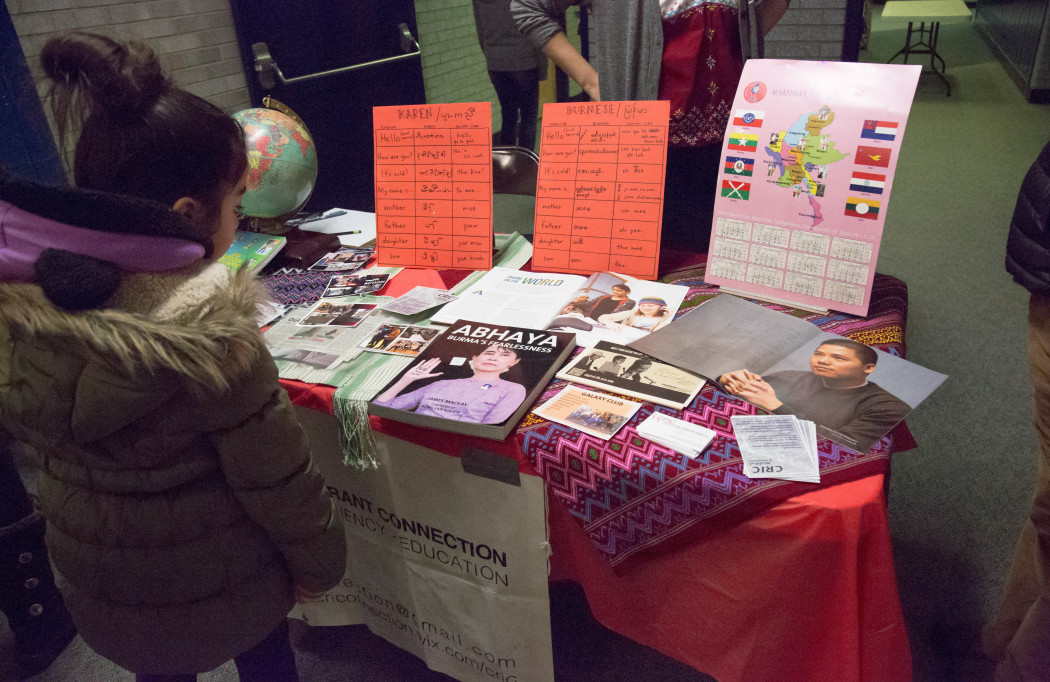Cache Valley and the refugee crisis
The Syrian refugee crisis is an ongoing dilemma, and volunteers at the Cache Refugee and Immigrant Center wish they could help.
“If we had a little bit better circumstances, then it would be really great to bring people to Logan,” said Nelda Ault, a volunteer and founder of CRIC.
Ault said the refugees who have come to Logan are pleased with the valley, but Logan doesn’t receive more refugees because of the lack of opportunity for uneducated workers.
“A lot of families who lived here talked about how they feel it is safe, it’s peaceful, it’s easy to get to the hospital if you need to go,” Ault said. “Our issue is employment.”
Since the onset of the Syrian Civil War in 2011, only 12 Syrian refugees have been relocated to Salt Lake City. That number is projected to increase to a few hundred in 2016. To date, Cache Valley hasn’t received any refugees from Syria.
“No one gets resettled to Logan,” Ault said, referring to Syrian refugees. “The Syrians who are arriving in the U.S. right now, the ones you’ve seen on the news going to Salt Lake, are people who left Syria up to three years ago.”
Ault said this two-to-three year wait will remain unless the resettlement process changes.
Both Utah and Cache Valley do accept refugees – about 1,100 a year statewide – but these refugees are not Syrian.
“The largest population we have here in Logan are people from the Karen ethnic group,” Ault said. “They are from Burma, but many spent years in Thailand in camps along the border. Second to that is probably Burmese Muslim people. They’re still from Burma, but they’re Muslim, which made them a religious minority.”
Ault said the remaining number of refugees in Cache Valley are from Eritrea, with a few families from Sudan, Somalia and Iran.
The hateful sentiment toward Muslim refugees is misguided, Ault said, seeing as how areas like Cache Valley, Twin Falls and Salt Lake have been receiving Muslim refugees for years. She also said she wished people could understand how small the percentage is of people who actually make it to the United States.
“We work with the luckiest of the lucky,” Ault said. “They made it through not only the crisis in their home country and not only the move to the second country, but [they] also made it through all the interviews, all the health checks, all the background. That takes a certain kind of person. I wish people knew that by the time they come here and show up in someone’s neighborhood, they’ve been through a lot. And they are more than likely going to exhibit that same resilience and that same determination in their life now that they’re here too.”
CRIC focuses on helping refugees adjust to life in the U.S. Every week at the Logan Library and Neighborhood Nonprofit, the organization hosts walk-in hours to help refugees.
“Four days a week for two hours each day at two different locations, we set up shop and families know they can find us here,” Ault said. “We help them look through their mail and fill out job applications and help them make phone calls or appointments,”
Ault said because CRIC is a small, local organization, they can only do so much to help.
“Because our resources are limited, we focus on these walk-in hours,” she said.
On Jan. 14, CRIC held “Stand with Refugees Night” at Mount Logan Middle School. The event focused on giving refugee youth a chance to tell their stories and share experiences from their home countries and the U.S. to help people understand more clearly the process of refugee relocation.
“Some talk a little bit about home, but some talk more about the experiences here,” said Luz Carreno, a CRIC and Americorps volunteer. Carreno is also involved with the VISTA (Volunteers in Service to America) and GAP (Global Aggie Program) on Utah State campus, programs that pair USU students with refugees in the community to serve as language partners and friends.
Ault said she thinks having a spotlight on crises like the one in Syria can help educate people about the refugee integration process.
To date, the U.S. has accepted roughly 1,800 Syrian refugees with a legal yearly limit of up to 10,000.

